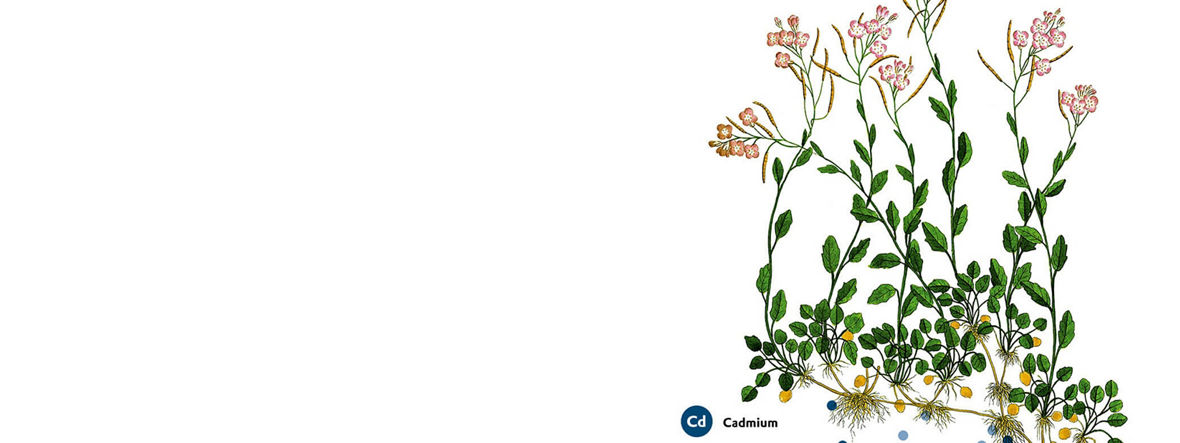Mining is not usually associated with green fields. The classic picture is of winding towers, strip mines, scarred landscapes, and contaminated ground. In Germany alone, substantial tracts of land on and around disused mine workings and former industrial sites are heavily contaminated with nickel and cadmium. Nationwide, it is estimated that about 20 percent of Germany’s land surface contains such high levels of heavy metals that it would be unsafe to grow fruit or vegetables.
Were it up to Alan Baker, a retired English botany professor, these areas would have long ago been restored to a clean, green, and fertile state. It was as a student, while exploring the site of a disused mine, that he first noticed that some plants were thriving despite the heavily contaminated soil. He began to investigate and, together with the US agronomist Rufus Chaney, identified what came to be known as hyperaccumulators: plants that absorb heavy metals from the soil and store them in high concentrations in their leaves. An example is a species of rock cress known as Arabidopsis halleri. This plant stores cadmium and zinc in such large quantities that it can be used to remediate industrial wastelands.
Undemanding
Arabidopsis halleri thrives on ground so heavily contaminated that nothing else grows there.
Inedible
Since the plants store heavy metals in their leaves, they are not eaten by herbivores.
Accumulating
Heavy metals such as cadmium and zinc are absorbed from the ground via the plant’s roots and then transported by plant cells to its leaves.
RECULTIVATION AND PHYTOMINING
Baker and Chaney recognized at once that these plants do more than make contaminated ground fit for recultivation. That’s why they coined the term “phytomining.” What these plants also do is to extract metals from the soil. In other words, they offer a simple, sustainable, and cost-effective way of producing raw materials. In an experiment conducted in the 1990s, the two scientists extracted 100 kilograms of nickel from 500 kilograms of plant ash. In the face of rising prices and restricted access to some heavy metals such as rare earths, phytomining could well become a lucrative business.
Years passed before an industrial use of hyperaccumulators became an option. That’s because Baker and Chaney’s research was financed by an investment company, Viridian Environmental, which secured the rights to all patents resulting from their work. Despite major interest from the business community, Viridian consistently blocked any commercial exploitation of phytomining.

RENEWED INTEREST FROM RESEARCH
But now the patents have expired and researchers are once again examining the potential of hyperaccumulators. Given the growing need for certain metals, especially in the electronics sector, and ever stricter environmental regulation of the mining industry, phytomining is becoming an increasingly attractive commercial proposition. The agronomist Guillaume Echevarria, for example, has shown that the plant yellowtuft (Alyssum murale) accumulates nickel salts and nickel oxides. Similarly, the chemistry professor Marie-Odile Simonnot is searching for plants that accumulate precious metals such as platinum and palladium.
Evonik retains an interest in the mining business via its subsidiary Cyplus, one of the world’s leading companies in the production and use of cyanides, which are used to extract heavy metals such as gold and silver from their ores. Given its major economic and ecological potential, the Corporate Foresight team at Evonik’s innovation unit Creavis has taken a closer look at phytomining as part of its game-changer analysis “Low-impact Mining.” Who knows, one day the scarred landscapes of former strip mines may be decked in a carpet of flowers.


